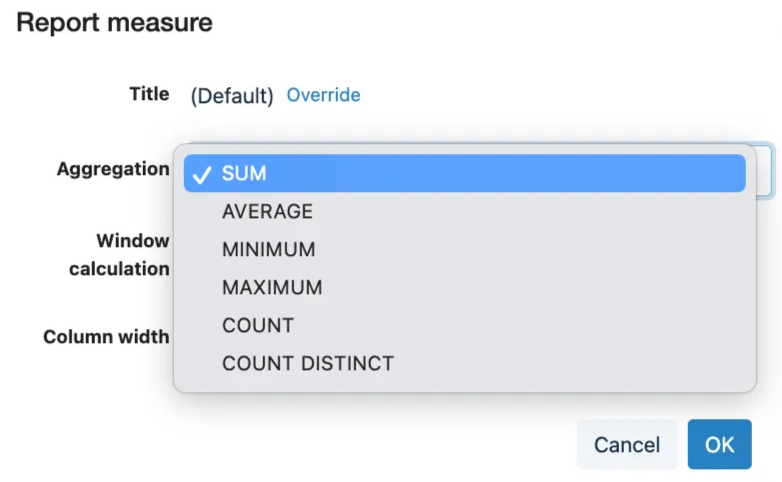What is the difference between a dimension and a measure?
If you think about a report, you might realize that there are two kinds of fields:
- Dimension fields segment or slice the data.
- Measures compute a single value for each group.
Common dimensions include dates (to group rows by year, month, day, etc...) and places (to group rows by country, state, etc...). However, almost any data field can be used as a dimension because it is very useful to slice the data in different ways.
In an e-commerce context, for example, you might want to slice your sales based on customer type, channel, vendor, status, and dozens of other attributes. You can get very granular. For instance, to compute total sales by customer, you could choose customer id or customer email as a dimension.
Given that a measure computes a single value per group, measures must compute an aggregated value for the entire group (using common aggregation functions such as COUNT, SUM, AVG, MIN, MAX, etc...).

In most domains, there are many more dimensions than measures.
That is because it is very common to slice your data in very different and flexible ways. In contrast, a handful of common measures are typically used.
A common mistake is to assume that quantitative/numeric values are always measures and qualitative values are always dimensions (and vice versa). It's a great rule of thumb, but it's not always true.
As an example, imagine that you run an e-commerce store.
Using numeric fields as dimensions is sometimes appropriate. For example, you might want to slice your data by ordered quantity, product price, product weight, customer total spend, etc...
However, this can result in a lot of different groups and in practice, you are likely to apply a formula to group your numeric fields into a few bins such 'Low' , 'Medium' and 'High'.
Similarly, date and text measures are also encountered. You might want a report to show the Latest order date by product by location. Product and location are used as dimensions, while Latest order date is a date measure, and its formula is MAX(OrderDate).
You can also apply discretization to turn numeric measures into text measures. For example, a report Sales by region might show a 'Low', 'Medium' and 'High' for each region.
